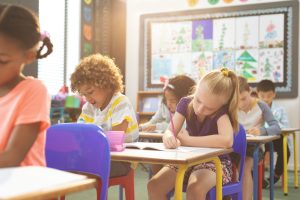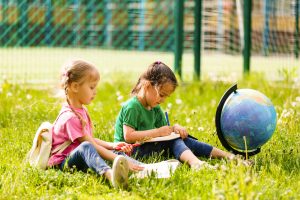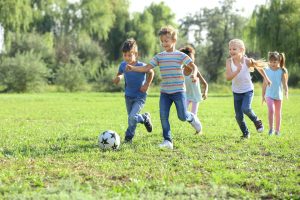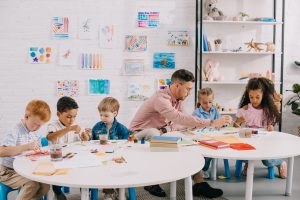Turning Pandemic Learning Losses into Student Silver Linings
Independent schools use an array of helpful strategies
 New student test data has again raised concerns over the lingering effects on students of the adaptations used by school during the pandemic, including such things as remote learning, mask mandates and a loss of extracurricular activities. While earlier improvements after return to classes had many educators hoping the worst was behind them, test scores from last winter and spring show this isn’t the case.
New student test data has again raised concerns over the lingering effects on students of the adaptations used by school during the pandemic, including such things as remote learning, mask mandates and a loss of extracurricular activities. While earlier improvements after return to classes had many educators hoping the worst was behind them, test scores from last winter and spring show this isn’t the case.
“Unfortunately, data from the past two school years no longer supports this conclusion,” testing company NWEA told the Washington Post in July. NWEA tests pre-K to grade 12 students in math, reading, language and science.
Maggie Kincheloe, a teacher at the Kimberton Waldorf School in Phoenixville, has a unique view of pandemic impacts. It’s common in the Waldorf tradition for teachers to “loop” through the lower grades, staying with their students for a few years. Teachers start in first grade and then teach that same student group through fifth or eighth grade. In 2020, Kincheloe welcomed a cohort of first graders. This year, she’ll shepherd those same students through fifth grade.
“I’ve thought about this a lot,” she said. “Every year I look at my students and ask, ‘Are they where I want them to be?’” And for the most part, she said, they are. “Because we were open throughout it all. I can’t draw any lines between the kids needing academic support and the pandemic,” she said.
The effects of the pandemic measures seem to swing like this, from worrisome to barely there to, dare we say, positive. Several local educators reflect on the lingering impacts of the pandemic and show that even the darkest clouds have a silver lining.
Lessons That Carry
Mindy Wawrzyniak can attest to that swing. As Head of School at the Center School, an Abington-based school that specializes in supporting students with educational gaps, she’s seen student struggles firsthand.
“The learning losses are great, and they’re really across the board,” she said. Wawrzyniak reported welcoming middle school students who can’t read, some who don’t know all their letters. “When a child is very far behind, it’s not only difficult [because of the amount of educational ground that needs to be covered], but they tend to be a little more resistant,” she said.

Dr. Jon Hall, Head of School at Media-Providence Friends School, agreed. “The attitude children have towards school is formed primarily in the younger grades,” he said. “With the exception of the rare few for whom virtual school was aligned with who they are as a learner, the experience made school harder and more stressful for kids. And the challenge schools face today is changing that attitude.”
To close learning gaps, schools must tackle academics while limiting stress. At the Center School, they start by grouping students by level. They also work to promote project-based learning and strengthen learning strategies. “We have to learn to break [bad] habits in a caring, understanding way and teach them new habits,” said Wawrzyniak.
Dr. Kim Wagner, Head of Lower School at Tatnall School in Wilmington, has found that sometimes it’s the teachers who have to break old habits. In helping to recuperate missing skills in reading, they found proficiency to be an even better basis for advancement than mastery. “Why that works,” said Wagner, “is the skills don’t go away when you move up.” Using this method, they’ve found they can more efficiently progress through foundational skills and get students to critical thinking skills more quickly.

Sister Margaret Fagan, principal at Bryn Mawr’s St. Aloysius Academy, said they made the most of their natural assets when things got tense. “We’ve tried to use the campus we have to get the boys outside,” Sister Margaret said of the school’s 42 acres. “Science outside. Reading outside. Playing games while learning.” The shift seems to have worked. “Academically there was a little slip, but our boys are back and better,” she said.
Social-Emotional Skills
In addition to remote learning, students also faced periods of limited socialization and increased levels of stress and anxiety, especially during the height of the pandemic. These experiences may have led to lagging social-emotional development.

“I’ve been a teacher for 20 years,” said Wagner. “[Every year] I’ve seen boys fight over a game of football, but now the emotions are so much larger.”
Wawrzyniak at the Center School agreed. “We’re seeing more kids with anxiety and difficulty managing stress,” she said. “Our curriculum is definitely geared toward skills academically, as well as socially and emotionally.”
Kimberton Waldorf, too, has expanded its mental health support system. At Tatnall, they have a social-emotional teacher and curriculum. “I think schools are looking at social-emotional needs more than we were before,” said Tatnall’s Wagner.
Ona Wetherall O’Hara, Kimberton Waldorf Early Childhood Section Leader, has even noticed a change among the school’s youngest students. “Many of our incoming students over the last two years have been ‘Covid babies,’” she said.

Compared to their predecessors, the so-called Covid babies are more likely to have a single caretaker, usually a grandparent or a long-term babysitter. These kids, O’Hara has found, are more likely to observe rather than enter directly into the action. There can also be a slight lag in speech, communication and skills like cooperative play. Yet these gaps tend to close naturally once the kids adjust to the classroom environment. “The kids are super eager and really excited to be with each other,” she said.
At St. Aloysius, they’ve increased the number of early elementary extracurricular activities offered. Cross-country running is now available to students as young as kindergarten, and this fall they added firstand second-grade flag football teams.
“To see those kids running up [the campus] hill away from their computers and enjoying each other. It’s great to see,” said Sister Margaret.
A Greater Good
Has Covid left a permanent mark on our students? Nearly all educators agree it has but not necessarily in the ways that tend to make headlines.

Technology in the classroom has found its place, which is often now in the background.
“We’re pushing back [on technology use] here at Tatnall,” said Wagner. “We’re only using screens if the screens have a real impact. I’m hoping to see that more. Teachers taking back the classroom.”
Some surprising benefits remain. “They became excellent handwashers,” said Kimberton Waldorf ’s Kincheloe of her nowfifth graders. “I think this generation of kids is going to view illness in a new way. I think there’s more of a tendency to be empathetic.”

Most educators have also reported a renewed appreciation for the school community. “We all thought about quality of life during Covid. There was a real longing for those social activities that were taken away from us,” said Wagner.
Now that they’re back in school, parents and students are not just showing up, they’re happy to be there. “When you work really hard to get through something together, I think you have a new understanding and appreciation for each other,” said O’Hara.
It also means you don’t have to go it alone.
“[The students] aren’t afraid to say ‘I need help,’” added Sister Margaret. “They’ve learned to lean on one another, and that’s what community is all about.”
